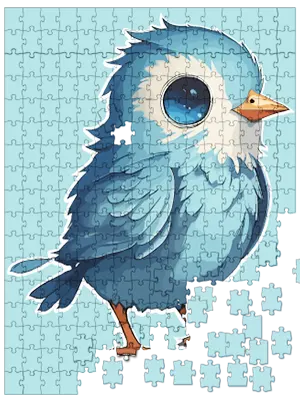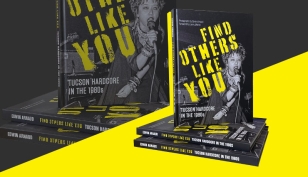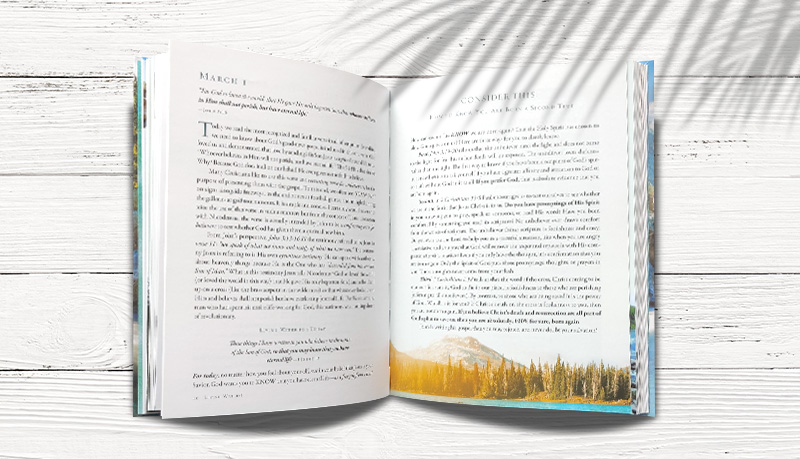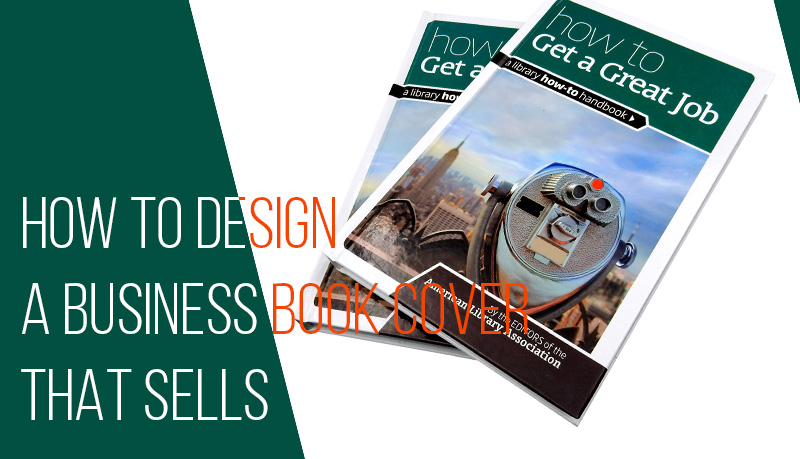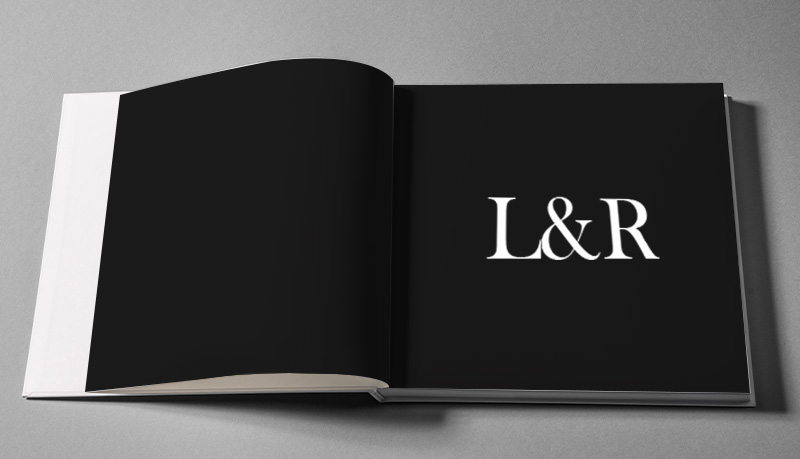Whether a mainstream publishing house or an independent author, choosing the right hardcover book printer is an important task. In this post, we explore what to look for to get the best printing partner for your needs.
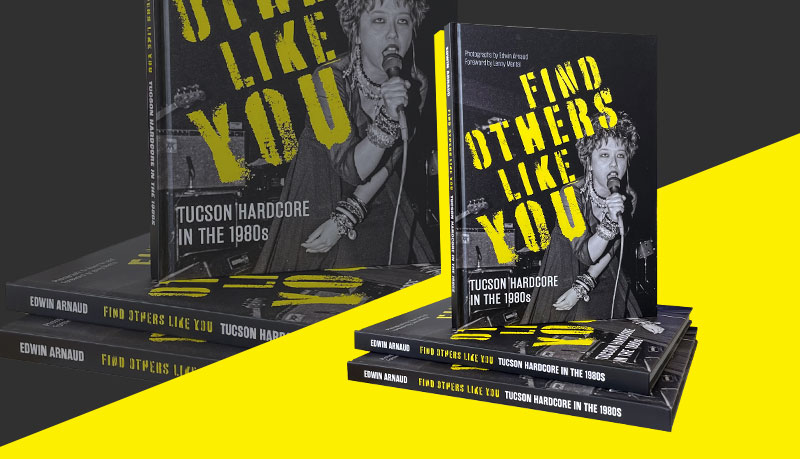
How to choose a hardcover book printer
Printing a hardcover edition of a book can be a great option whether you represent a mainstream publisher or you're an independent self-publishing author. But to make sure you get the best product and the best price, you need to know how to select your ideal hardcover book printer. Once you start looking into it, you'll soon discover that not all printing services are created equal.
There are small local print shops, print brokers, international printing services, offset printers, digital printers… the list goes on. Not all of these can handle printing high-quality hardcover books. So, in the rest of this post, we'll look at what's involved in printing a hardcover book and how to evaluate a hardcover book printer to make sure you'll get an excellent product and first class service at a price to suit your budget.
The hardcover book printing process
Hardcover book printing is a fascinating process that involves several specific steps to make sure the result is the production of high-quality books. It begins with the preparation of the book's content and ends with the finished product polished and packaged and ready for distribution. The process typically includes the following stages:
- Manuscript formatting — Formatting a manuscript for hardcover book printing involves adjusting the layout, margins, and typography to suit the page size and the specific requirements of hardcover binding. It includes checking for proper alignment of text, headers, and footers, as well as integrating any special elements, such as chapter headings, illustrations, or decorative elements within the design. Don't forget the spine width calculation (based on the number of pages and the weight of your chosen paper)
- Interior layout design — Interior layout design for hardcover book printing involves creating an aesthetically pleasing arrangement of text, images, and other elements on each page, enhancing readability and visual appeal. This process includes making decisions about font selection, paragraph spacing, and the placement of graphical elements to enhance the overall reading experience. Pay attention to consistency throughout the book and think about aspects such as hierarchy and narrative flow.
- Cover design — Cover design for hardcover book printing is all about conceptualizing and creating an eye-catching visual representation of the book's content and tone in line with the genre or subject matter while taking into account the target audience and genre conventions. It involves selecting appropriate imagery, typography, and layout to convey the message of the book and attract potential readers to pick it up and look inside. You'll need to think about the content of the front and back covers and the spine, barcode placement, and printing specifications to make sure the cover design integrates with the overall production process.
- Offset printing — Offset printing a hardcover book involves transferring inked images from pre-prepared metal plates onto a rubber blanket roller, then onto the printing surface, typically high-quality paper or cardstock. This method allows for consistent, high-resolution printing suitable for large or short print runs, and offers the sharpest text and most vibrant colors on each page. The printed sheets are bound together, usually with a durable hardcover binding, creating a finished product ready for distribution and sale.
- Binding — Binding a hardcover book involves assembling the printed pages into a text block, which is then attached to a cover made of greyboard wrapped with printing-coated paper, leatherette, or cloth. The cover typically consists of a front board, spine, and back board, with end sheet papers connecting the text block to the cover. The binding process includes trimming the edges of the text block, applying adhesive and stitching to secure the pages, and affixing the cover material, resulting in a sturdy, professional-looking hardcover book.
- Finishing — Special finishes in printing and binding hardcover books include metallic foil stamping for a luxurious metallic sheen, embossing and debossing for raised or recessed textures, lamination for added durability and protection, and UV spot coating for highlighting specific areas with a glossy finish. Options such as dust jackets provide an extra layer of protection and space for artwork or summaries, slipcases offer a decorative and protective outer covering, decorative headers are a nice professional touch, and marker ribbons provide a convenient bookmarking feature, collectively contributing to the aesthetic and tactile experience of your finished hardcover book.
Each step requires a series of artistic, professional, and technical decisions, along with precision and expertise, in execution to maintain the integrity of the final product. Understanding each important step in this process is essential for both mainstream publishing businesses and self-publishing authors to guarantee that you choose the right printing service for your needs and the successful creation of hardcover books that meet your standards of quality, aesthetics, durability, and price point. So, when choosing a hardcover book printer, always look for the full range of options and services that they have on offer.
You should choose an experienced professional offset book printer such as QinPrinting that can provide a reliable “one stop” service for all your needs, from design and formatting support to adding the finishing touches to a professional product.
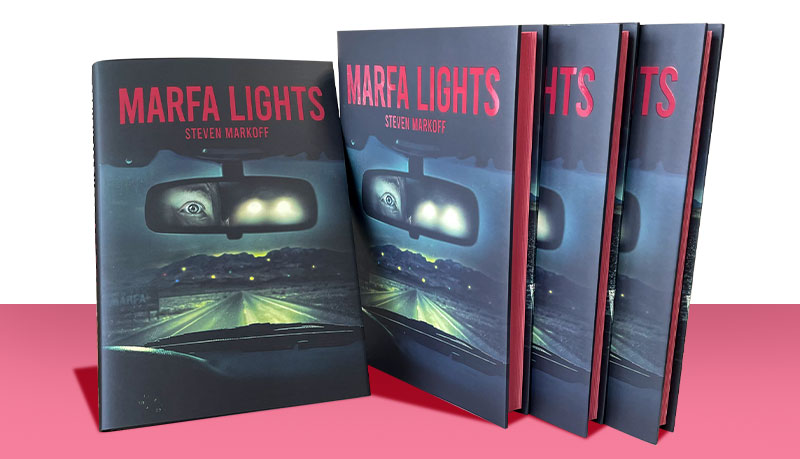
Materials for hardcover book printing
The materials used in hardcover book production play a significant role in determining the book's overall quality and durability. Publishers and authors should choose a printer which has several options to choose from when it comes to selecting materials for their hardcover books. These should include a range of cover board, paper stock, cloth, coated paper, or leatherette for covering. Cover boards provide structural support and rigidity to the book's cover, while paper stock contributes to the readability and aesthetic appeal of the interior pages. Endpapers not only enhance the book's appearance but also provide additional strength and stability to the binding. The choice of materials depends on various factors, such as budget, aesthetic preferences, and intended use of the book. Always choose a book printer that can offer the widest possible selection of materials. At QinPrinting, we'll be happy to send you a comprehensive sample book for the cost of mailing it to your chosen address. If that interests you, find out more on our samples page or just get in touch to ask us for one.
Offset printing for hardcover books
Hardcover book printing can be achieved through different printing methods to reproduce text and images onto paper stock or other materials. The two primary printing techniques used for hardcover books are offset printing and digital printing. While digital printers can sometimes handle hardcover book production, it's not the method we'd recommend as — apart from the fact that it gets prohibitively expensive if you need a larger print run — the reproduction, materials, and special finishes that digital can offer don't match the range and quality of offset printing services.
Offset printing, also known as lithography, involves transferring ink from a printing plate to a rubber blanket and then onto the printing surface. It is ideal for large print runs and offers precise color reproduction and high-quality results. Digital printing, on the other hand, uses electronic files to transfer images onto paper or other substrates. It is suitable for short print runs and offers quicker turnaround times, but you sacrifice quality and choice for those advantages. Understanding the strengths and limitations of each printing method is essential for selecting the most suitable option based on your project requirements and budget constraints.
Prepress and proofing
Prepress and proofing are critical stages in the hardcover book printing process that ensure accuracy, consistency, and quality throughout production. Prepress involves preparing digital files for printing, including tasks such as color correction, image retouching, typography and layout optimization. It makes sure that the final printed book meets your desired specifications and standards. Proofing, on the other hand, involves reviewing printed proofs of the book before mass production begins. It allows publishers and authors to identify and correct any errors or discrepancies in the content, layout, or color reproduction. Effective pre-press and proofing procedures are essential for minimizing costly mistakes and helping to guarantee the successful outcome of the printing project.
Designing a hardcover book
Designing a hardcover book is a creative and technical endeavor that requires careful consideration of various elements to produce a visually attractive, well-made, user-friendly product. Whether you're a publishing professional or a self-publishing author, drawing inspiration from diverse sources can help you conceptualize and execute a design that resonates with your readership. From classic design principles to innovative trends, exploring different avenues of inspiration can spark creativity and guide you in crafting a unique but genre appropriate aesthetic for your hardcover book.
The first stop is to examine all the covers and interior layouts of the bestselling books in your genre. Think about what they all have in common and what makes each unique. Look at images, color schemes, typography, content, layout, and make notes. You can use Google Books, Amazon, Barnes & Noble, and, of course, your high street bookstore and your local library to help you with this research.
Once you have an idea of the kind of cover and interior layout you want for your hardcover book, write up your notes along with sketches and examples from your research. These you can use to guide your own creative design work or you can pass them on to your professional third-party designer to give them a precise idea of what you want them to create. If you choose to design your book yourself, you can download our free hardcover book templates from our templates page.
But to get you started, you might want to read our post, Book Cover Design Ideas, which focuses on twelve distinctive books that we have printed for our customers. Each cover comes with an explanation of the choices that were made and how the elements of the design combine to do their job.
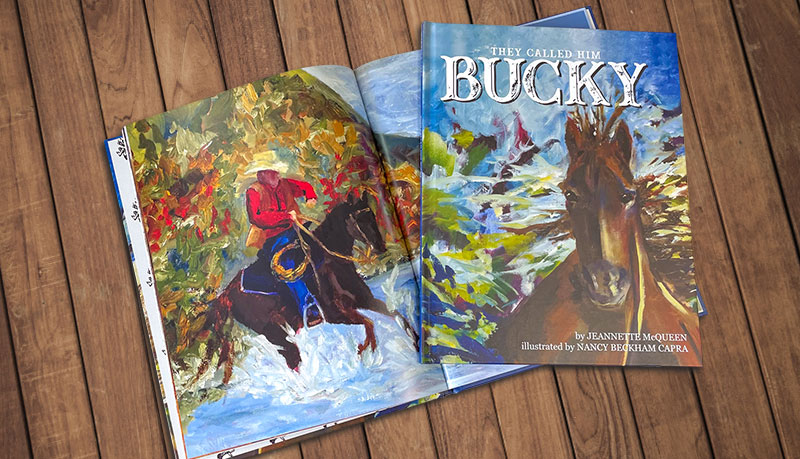
Key elements of a successful hardcover book design
A successful hardcover book design is characterized by its ability to grab a potential reader's attention, encouraging them to pick it up and look inside while also communicating a clear message about the book's content. Key elements such as typography, layout, imagery, and color scheme play vital roles in shaping what we call the “visual identity” of a hardcover book.
Typography sets the tone for the text and enhances readability
Layout determines the flow and organization of content on each page
Imagery, including illustrations, photographs, and graphics, adds depth and context to the narrative
Color scheme evokes emotions and reinforces the book's theme.
Balancing these elements harmoniously is essential for creating a design that is both aesthetically pleasing and functional. Of course, this is the heart of book design: combining the artistic and creative aspects with the structural and functional dimensions of a physical, printed book. The two sides influence each other. So, for example, the weight of the paper that you choose, the number of pages, the format and the orientation of your hardcover book will dictate the area and shape of the front and back covers and the spine. The spine is often an overlooked area. It's not only printable but on a bookshelf, it's the first thing any potential reader will see. That's why it's so important to get all the elements right.
Tips for selecting fonts, colors, and images
Selecting fonts, colors, and images that complement the theme and concept of your hardcover book is an essential part of creating a cohesive and impactful design. When you're choosing fonts, consider factors such as readability, personality, and compatibility with the book's genre and readership. Experiment with different typefaces and font pairings to find the perfect combination that enhances the overall aesthetic and readability of the book. For an in-depth guide to choosing and combining fonts in book design, read How to Choose the Best Font for Your Book.
Similarly, selecting a color palette that fits with the book's content and evokes the desired emotions in the reader can elevate the visual appeal of the design. In fact, if you examine bestseller covers in any genre, you'll soon see that a huge amount of thought has gone into choosing the color scheme. We took a deep dive into color psychology and how to exploit it to the most powerful effect in book design in our post, What Is the Most Attractive Color for a Book Cover?
Incorporating high-quality images, whether original artwork or licensed photographs, can add depth and authenticity to the book's narrative and content. Of course, not all books need interior illustrations or photographs. Most novels, for example, will only require cover art. But several popular and high-selling hardcover book types, such as coffee-table books, fine art and photography books, children's illustrated books, and most academic textbooks, put the visual element right up front as the core communication channel of the entire work; to which the text plays an auxiliary role. When selecting images, make sure they are coherent with each other and with the book's theme, working together to enhance the reader's experience rather than causing a distraction.
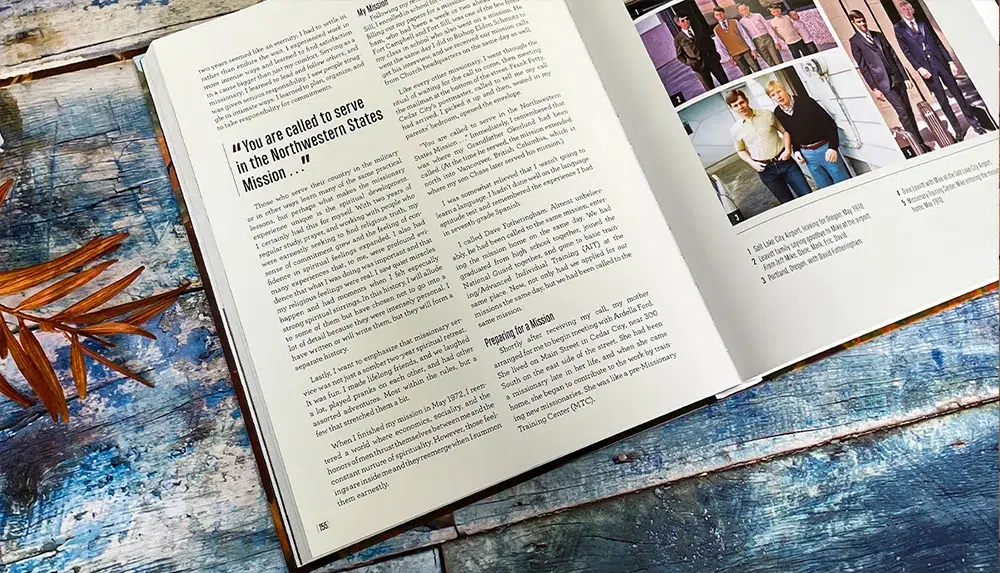
Finishing and binding a hardcover book
Finishing and binding are the final stages in the hardcover book printing process, where the book takes its definitive form and finishes. These stages encompass a range of techniques and processes aimed at enhancing the durability, artistic appeal, and overall quality of the finished product. From selecting the right finishing options to understanding what's involved in the binding process, attention to detail and craftsmanship are paramount to achieving professional results.
Whether you choose us or another hardcover book printer to fulfill your orders, we strongly recommend that you look at several examples of previous projects and make sure that your printer has a deep practical understanding of what's involved in a successful hardcover book binding.

Finishing options with a hardcover book printer
This is where the difference between the limited offer of a digital-only printer and the superior option of a professional offset printing company really shows. Any decent hardcover book printer should be able to offer you a wide variety of finishing options to add a touch of elegance and sophistication to the final product. Common finishing techniques include:
Gloss or matte laminations — these are varnishes which make the book more durable and add either shiny or soft sheen
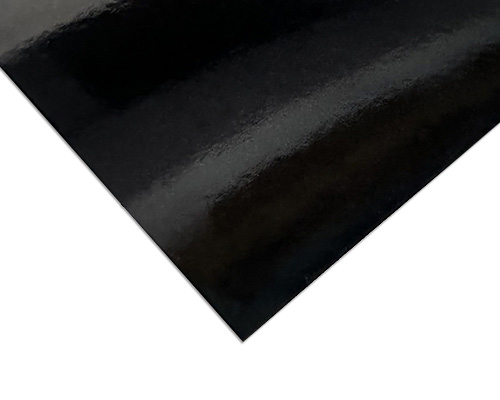
Foil stamping — a process by which we apply a metallic foil design — either lettering, graphics, or both, to the surface of a printed sheet or book cover
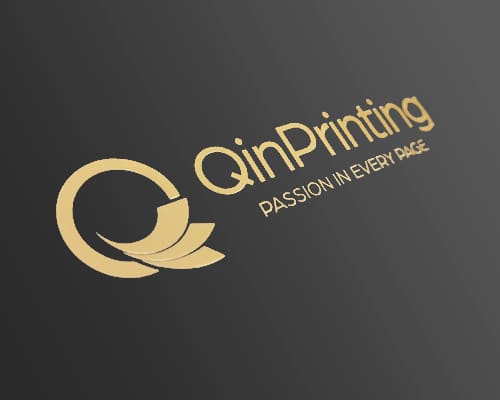
Embossing — a mechanical process by which we “lift” a design — either lettering, graphics, or both, out from the surface of your hardcover
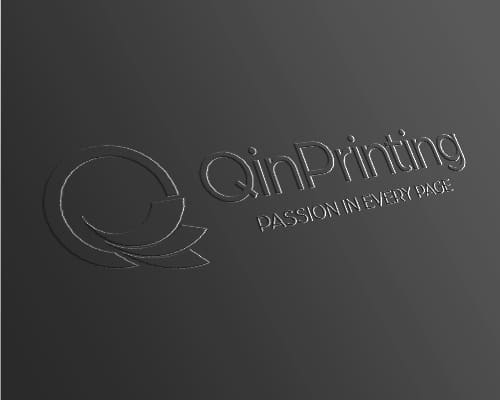
Debossing — a similar process to embossing, but in this version, we impress an image or letters into the paper
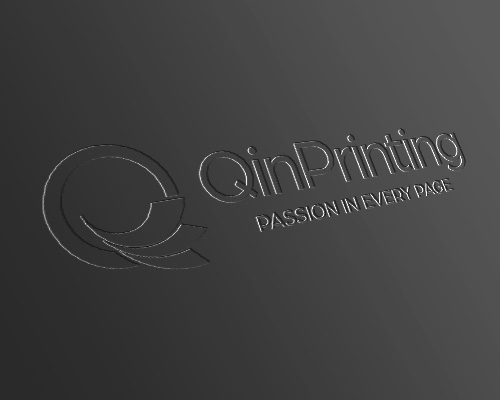
Spot UV coating — this uses ultraviolet light and a special varnish to highlight a particular element of the design and works best on a matte surface
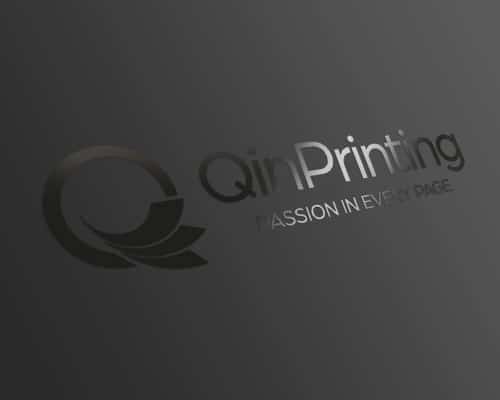
Each finishing option offers unique opportunities for customization and personalization, allowing publishers and authors to create hardcover books that reflect their style and branding. So, make sure that your hardcover book printer makes these options available to you. We will! But you may still be wondering exactly what's involved in creating a professional hardcover book. So, let's walk through how we make a beautiful case bound volume.
The hardcover book binding process
Hardcover book binding, also known as case binding, is a traditional binding method commonly used for hardcover books such as coffee-table books, fine art and photography books, memoirs, nature and science books, and novels or anthologies of stories. This process involves several steps. Let's look at them now.
In the printing and binding process, “signatures” refer to groups of pages that are printed on a single sheet of paper, which is then folded, trimmed, and bound together. These folded sheets create a small booklet-like section that, when combined with other signatures, forms the complete book. This method allows for efficient printing and ensures the pages are in the correct order when bound.
After printing, the signatures are collated, meaning they are gathered and arranged in the correct sequence. They are then sewn together along the fold to create a secure and durable binding. Finally, the sewn signatures are glued along the spine to form the book block, which is the main body of the book, ready for cover attachment.
The hardcover casing is made by cutting sturdy cardboard to form the front and back covers, as well as the spine. These pieces are then wrapped in cloth, paper, or another covering material, and glued securely. The book block is then attached to the casing, completing the hardcover book assembly.
Endpapers are the sheets of paper that attach the book block to the front and back covers. They are glued to the inside of the covers and the first and last pages of the book block, securing the block to the casing. Endpapers provide added strength to the binding and can enhance the book's aesthetic appeal with decorative designs or colors.
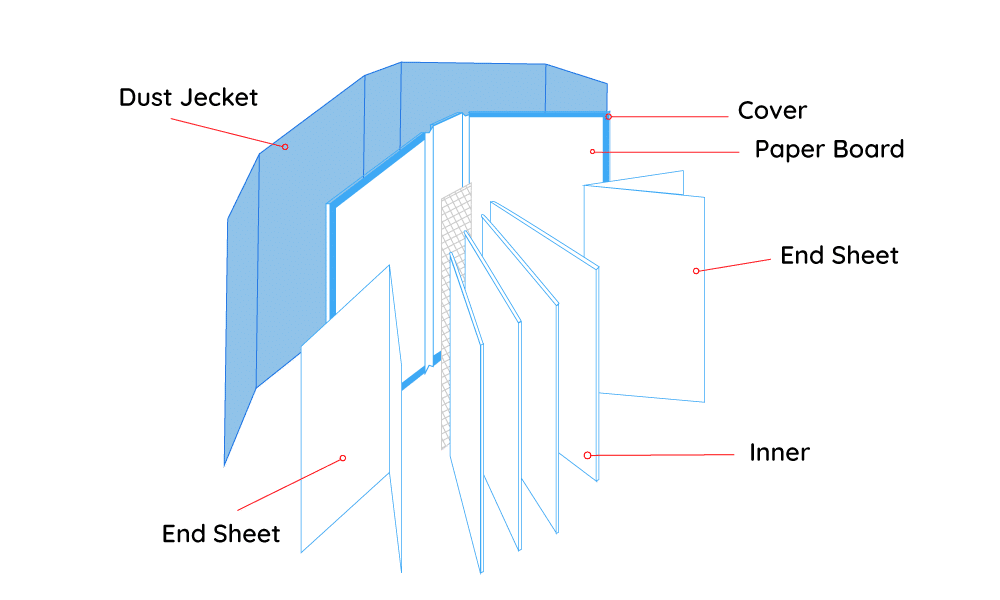
Optional extras
- Head and tail bands: These are small decorative bands attached to the top (head) and bottom (tail) of the spine. They add a touch of elegance and help protect the spine from damage.
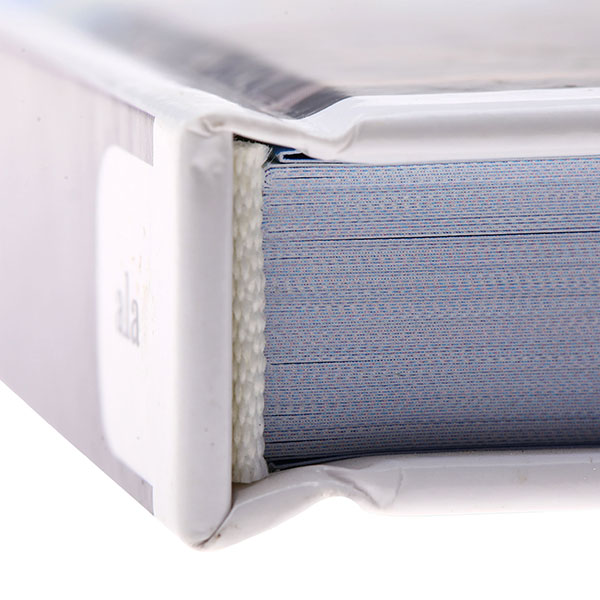
- Marker ribbons: A marker ribbon is a thin strip of fabric, typically silk, sewn into the spine, used as a bookmark. It provides a functional way to keep one's place in the book.
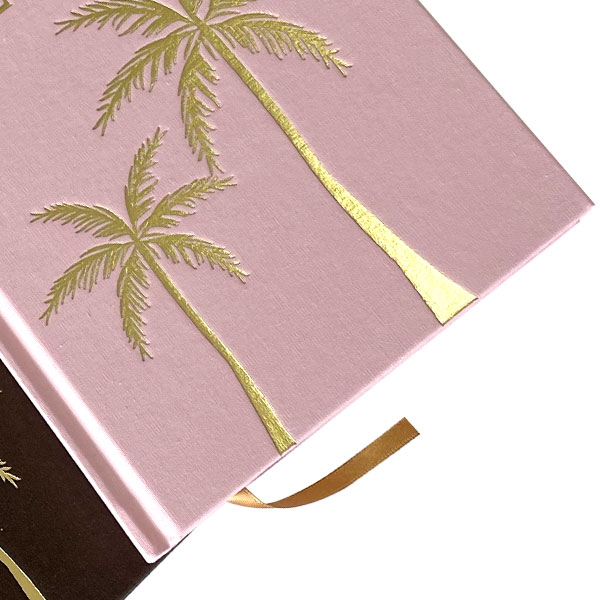
- Edge gilding: This involves applying a thin layer of gold or silver leaf to the edges of the pages. It enhances the book's visual appeal and can protect the page edges from dust and moisture. It's also possible to paint artwork or typography onto the edges of the pages for a spectacular effect.
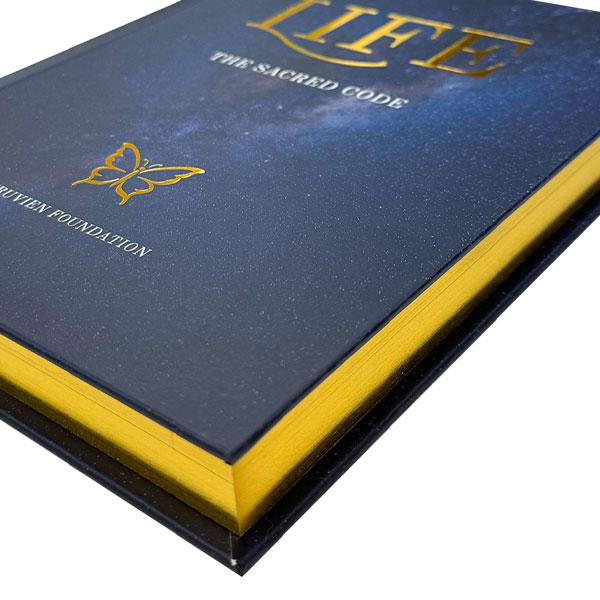
- Slipcases: These are custom-fitted boxes that protect the book from dust, light, and damage. Slipcases add an extra layer of protection and can be designed to match or complement the book's cover for added aesthetic value.
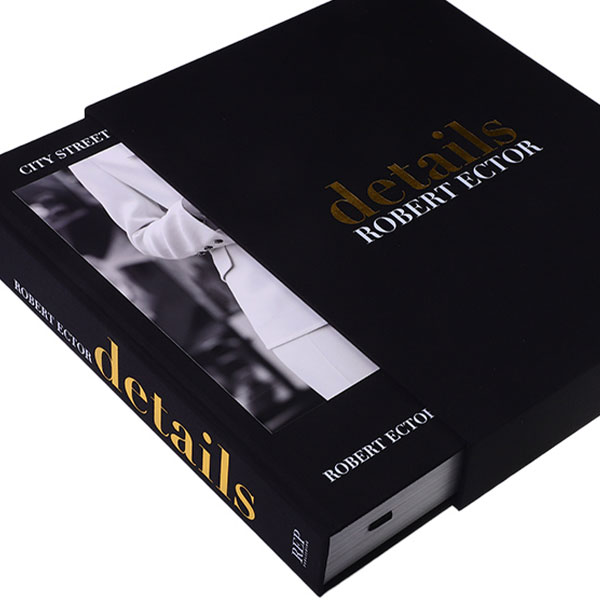
Mastering the hard case binding process requires precision, attention to detail, and specialized equipment. Publishers and authors should take care when choosing a printing and binding service to make sure the operator is an experienced and knowledgeable hardcover book printer with the necessary expertise in the successful execution of this binding method.
How much does it cost to print a hardcover book?
The cost of printing hardcover books depends on several factors such as the size, paper type, black-and-white or color printing, number and complexity of illustrations and inserts, finishing options, and special features along with the number of books you print. With a digital printer — even if they offer basic hardcover binding — the costs per unit are fixed, so larger orders of 100 copies or more can get very expensive. With offset printing, the larger the quantities printed in a single run, the lower the cost per unit. For example, printing a 5.5" x 8.5" size and 248-page hardcover novel with us, with standard specifications, could cost:
- $1,994 for 500 copies ($3.99 each)
- $2,717 for 1,000 copies ($2.72 each)
- $8,696 for 5,000 copies ($1.74 each)
- $16,399 for 10,000 copies ($1.64 each)
Prices are EXW and exclude shipping costs.
Ordering more copies per print run reduces costs per copy, increasing profit margins. Even with a minimum order of 100 copies, profit per sale could range from $5 to $10 based on average US prices. Confident sales projections on higher volume runs could yield profits exceeding $20 per sale. For a detailed account of all the factors involved in calculating the cost of hardcover book printing with a reputable specialist hardcover book printer such as QinPrinting, read, How Much Does it Cost to Print a Hardcover Book?
Turnaround times for hardcover book printing
Planning and execution of hardcover book printing projects. The average turnaround time for printing projects varies depending on factors, such as print quantity, complexity, and production schedule.
If you can find a digital printer capable of hardcover binding and you're not too worried about having optimal quality results, you may get quicker turnaround times compared to offset printing, making it a potential option for projects with tight deadlines or smaller print runs, expedited printing services may incur additional costs and there's no volume discount.
Offset printing, even though turnaround can be longer, is often better. After all, it's not that much longer! Just be sure to plan your project timeline effectively, coordinating with your hardcover book printer to ensure timely delivery of materials and allowing sufficient time for production, proofing, and shipping. By understanding the factors that influence turnaround times and implementing efficient project management strategies, publishers and authors can make sure that delivery falls well within their required schedules.
How to lower the costs of hardcover book printing
Budgeting and saving costs in a printing project require careful planning and consideration of various factors. While our mainstream publishing clients may have large budgets to spend on luxury special editions, we're committed to helping our independent and small press clients achieve the same high-quality results without breaking the bank. Any decent hardcover book printer should be willing to put their customer's needs above merely maximizing sales. Here are several options to help you keep costs down while still producing a beautiful hardcover edition.
- Start by assessing your budget and identifying cost-saving opportunities, such as optimizing print quantities and selecting cost-effective materials.
- Make sure your pre-press processing is thorough and complete.
- Use our instant quote tool to adjust specifications and compare pricing options and use an offset, rather than a digital printer, to get the best discounts for bulk orders.
- Consider a range of finishing options that offer comparable quality at a lower cost. For example, a textured paper can offer a comparable effect to a cloth or leather binding but is relatively inexpensive.
- Explore crowdfunding or pre-order campaigns to offset printing expenses and gauge interest in your book before committing to a large print run.
By adopting a proactive approach to budgeting and cost-saving, publishers and independent authors can maximize the value of their investment and produce high-quality hardcover books within their budget constraints.
Ready to print? Hardcover book printing checklist
Before sending your hardcover book project to the printing press, it's essential to make sure that everything is in order. Here's a checklist to help you prepare your files:
Check file formats
Confirm that your files are in the correct format required by the printing company, typically PDF files with embedded fonts and high-resolution images.
Verify bleed and margins
Make sure that your design includes bleed and proper margins to prevent any content from getting trimmed during the printing and binding process.
Double-check color settings
Verify that your color settings are correct, which should be CMYK or Pantone for print to guarantee accurate color reproduction.
Proofread your content
Thoroughly review your manuscript for any spelling or grammatical errors, as well as formatting inconsistencies, before finalizing your files. Even the best printer in the world (we're blushing!) can't proofread your text content for grammar, style, and spelling. We'll make careful technical checks, but the content is always the author's responsibility.
Review specifications
Take the time to review the specifications. Make sure that they align with your expectations and requirements.
Submit your order
Once you're confident that everything is correctly prepared, submit your order to the printing company, along with any specific instructions or preferences regarding printing and binding options.
When choosing a hardcover book printer, always make sure that they offer close personalized customer service and that you can contact a real person for expert guidance and advice. At QinPrinting, we take the quality of our customer service extremely seriously. For example, if you print with us, we'll assign a named expert printing consultant to you — someone you can get to know and trust and with whom you can build an active collaboration — to guide you step-by-step through the entire process from file preparation to final delivery and distribution. You'll be able to talk to them, ask questions, and get help via email, a private chat, or via the telephone and Skype.
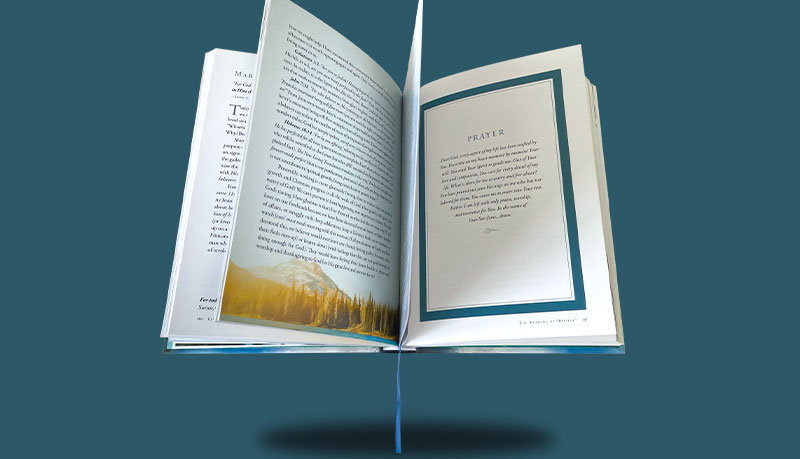
What to look for in a hardcover book printer
Partnering with a reputable, experienced offset hardcover book printing company can streamline the hardcover book printing process and guarantee the best results. Here's what to look for:
Expertise and experience
Professional printing companies should be able to demonstrate their expertise and experience to handle complex printing projects and offer valuable advice and guidance throughout the process, along with examples of projects from their archives.
Access to resources
A good hardcover printer will have access to state-of-the-art equipment, materials, and technologies that may not be available to print-on-demand and digital-only services.
Quality assurance
Working with a reputable hardcover book printer should ensure high-quality results, from color accuracy and image resolution to paper stock and binding. Ask about these services and quality control protocols. For example, at QinPrinting we have developed a range of rigorous quality control protocols designed to make sure that all our products are printed to the highest standards and leave our facilities in perfect condition.
Customization options
An offset hardcover printing company that's any good should offer a comprehensive range of customization options, including finishing techniques, paper types, and binding styles, to meet the unique needs and preferences of each project.
Timely delivery
Choose a hardcover book printer like QinPrinting that prioritizes efficient production schedules and timely delivery to meet project deadlines and guarantee customer satisfaction.
Collaboration and customer service
A good printing company will establish clear communication channels right from the start, assign a knowledgeable consultant to you, and provide detailed project specifications and preferences to encourage and support a collaborative and successful partnership.
When selecting a printing company for your hardcover book project, consider factors such as reputation, portfolio, pricing, turnaround times, customer service, range and quality of materials, and technological capabilities. By partnering with a professional hardcover printer such as QinPrinting and following best practices for collaboration, publishers and authors can achieve exceptional results and bring their hardcover book projects to life with confidence and success.
Talk to us!
Designing and printing an exclusive, high-end hardcover book either as a premium addition to your self-publishing strategy or as an independent business proposal is always a satisfying creative project which adds immense value to your portfolio of published work. Read more here or get in touch today to chat through your hardcover book printing needs or to ask for a no-obligation quote. We can't wait to help you make your custom hardcover book the most beautiful yet!




